 5
5
This week, as we continue our study of color as it relates to quilting, we focus on the Complementary color plan.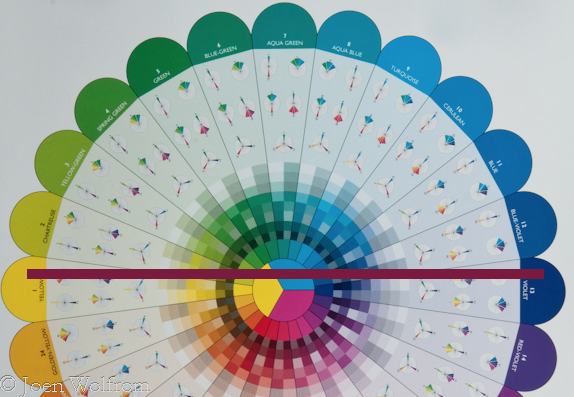
The complementary color plan features two colors directly opposite each other on the color wheel as seen in our Essential Color Wheel. Yellow is directly across from Violet. As opposites, these two colors together create visual excitement, vibrancy, intensity and high impact. But as direct opposites they compete for attention when placed together in their most saturated hue.


When placed together, the complementary colors in their most saturated form vibrate and can be jarring for the viewer. Think of complementary colors as two extroverts at a small dinner party. Both compete for attention with their enthusiastic talk, charm and laughter, but together, they are overwhelming for the rest of the guests at the table. The Amish Red and Green Bar quilt is an example of a saturated complementary plan featuring red colors that vibrate, making the quilt difficult view for a long period of time.
Used carefully, however, the complementary colors can create dynamic and very graphic quilts, when one color is the lead player, while the other takes a supporting role. In this case it is important to use a wide range of of colors within the two to create the most effective results. And don't be tempted to stray over by including a neigboring color as it becomes immediately apparent to the viewer that this neighbor doesn't belong in the group. As a quilter, this is where your Ultimate 3-in-1 Color Tool can come in handy. Each of the twenty-four pages features not only the pure color, but also the tints, shades and tones of that pure family. Use it for delving into your stash or take it along when fabric shopping to determine if a fabric fits within your complementary color plan.
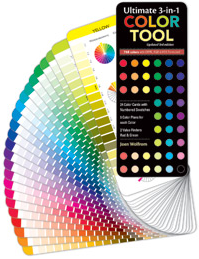

In her book The Quilter's Color Club, Christine Barnes, says that "lowering the intensity of complementary colors is the most effective way to soften the contrast. Brilliant blue-green and red-orange can overwhelm, but quieter versions of those colors, such as azure and terra cotta, are easier on the eye." Working with
However, being opposites on the Essential Color Wheel can also be an advantage. Did you ever think about why life vests and life rafts are bright orange? As the opposite of Cyan (Turqouise) they contrast with the water and are visible for miles (see second bar from the left below). Understanding that these opposites can have a powerful effect means that you as a quilter can use them to make a statement.

Need ideas? Anytime you are out and about with your camera or cell phone take time to look around. Inspiration for complementary color combinations are everwhere. Here are just a few examples:

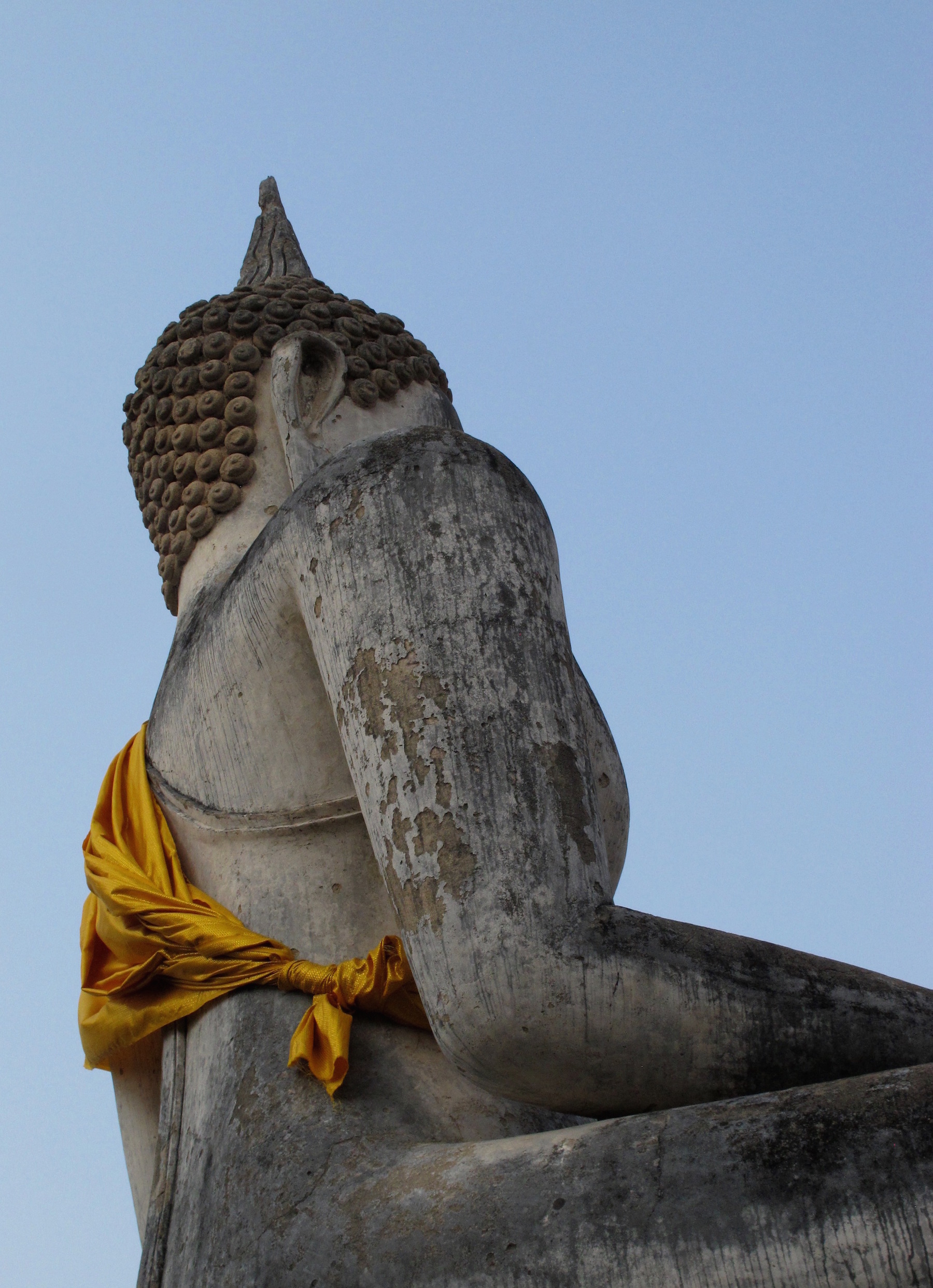
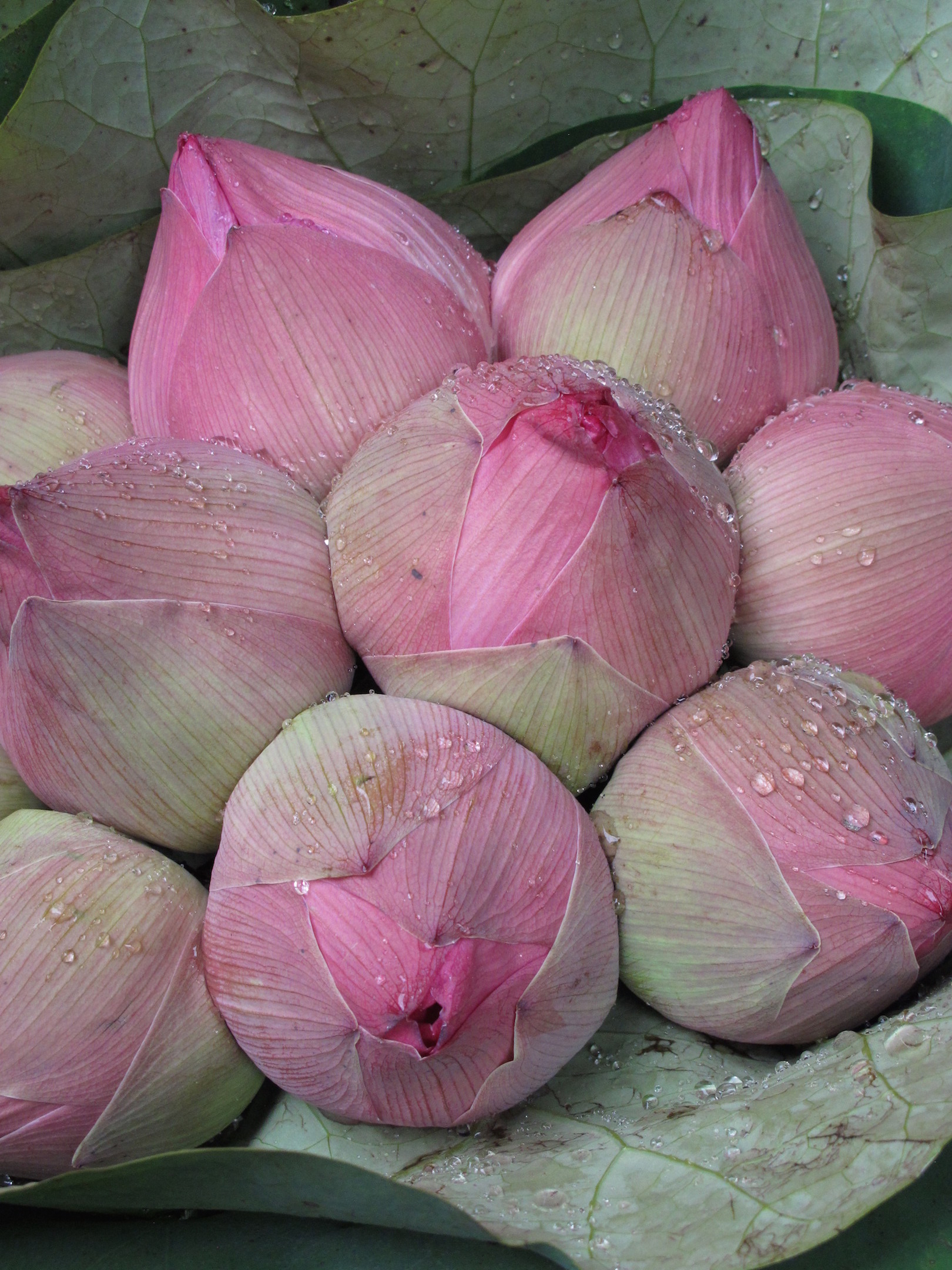

Now let's look at some quilts where in most cases one color is the lead and the other is secondary:
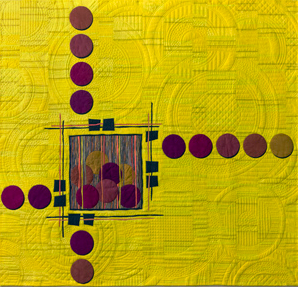
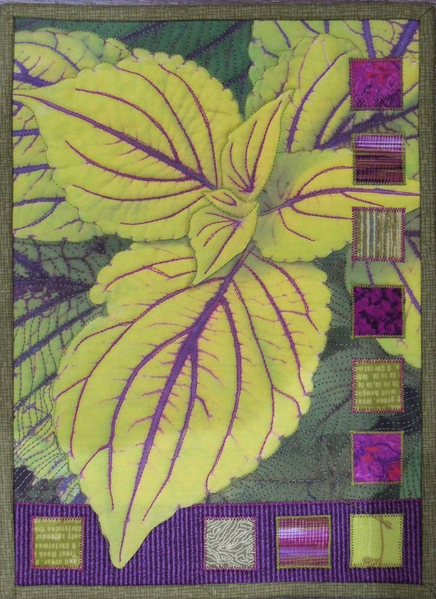
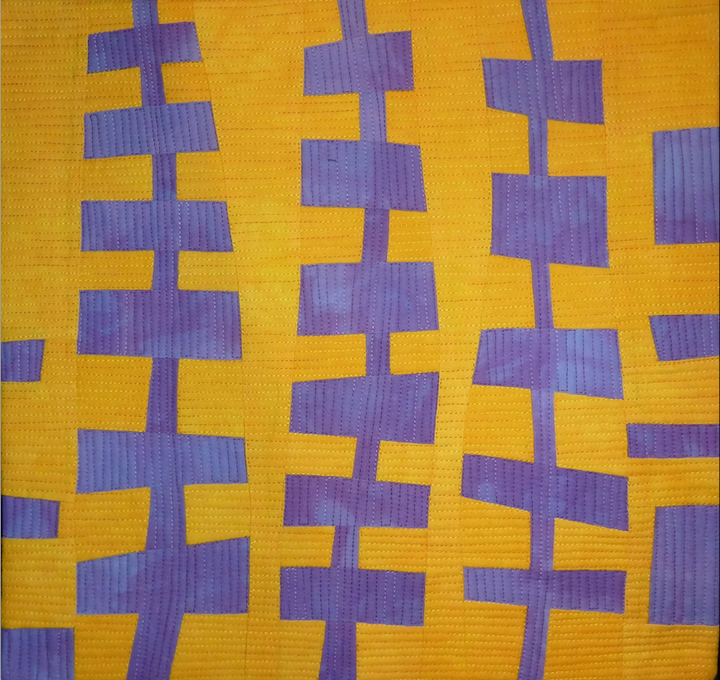
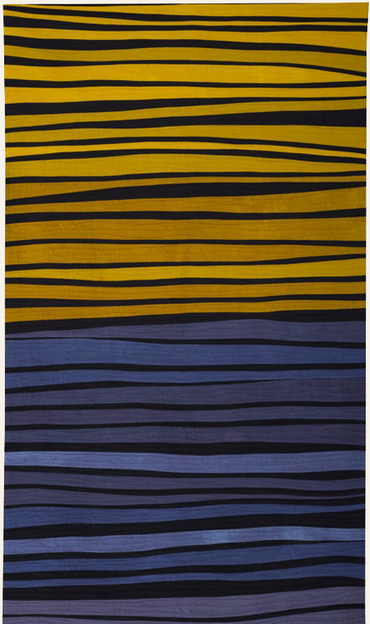
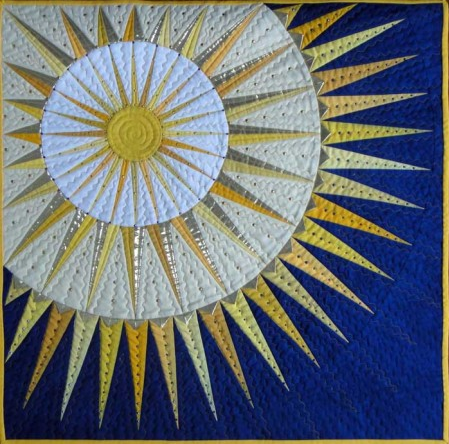
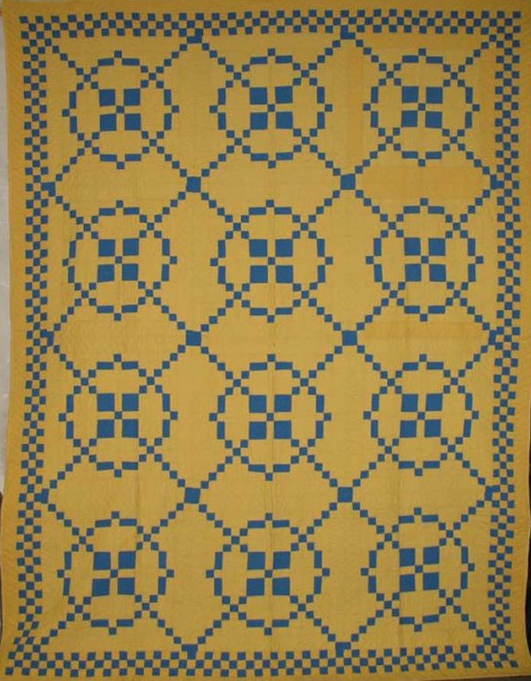
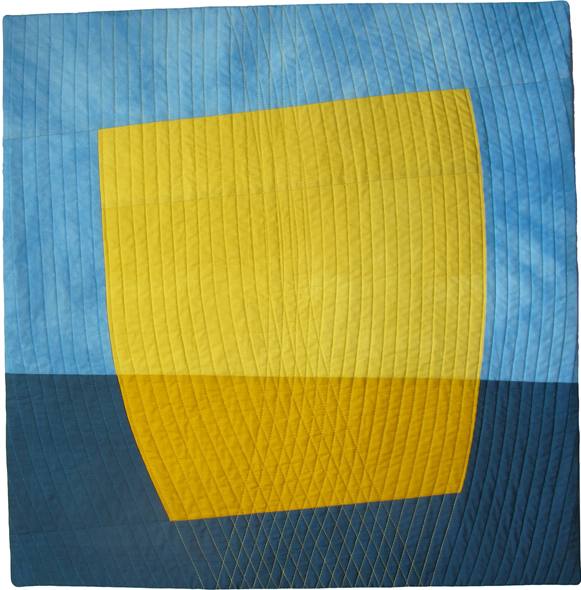


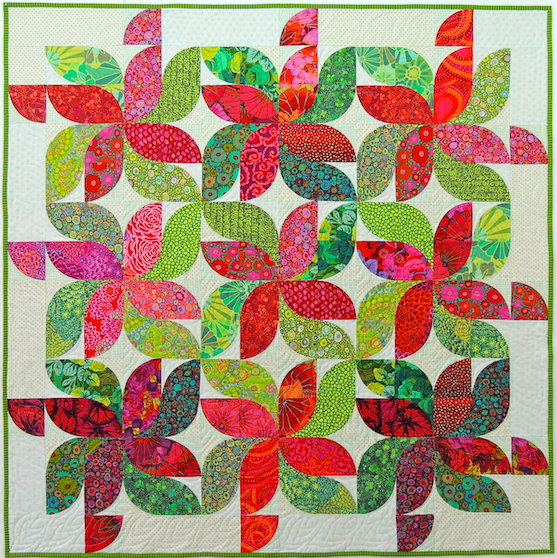
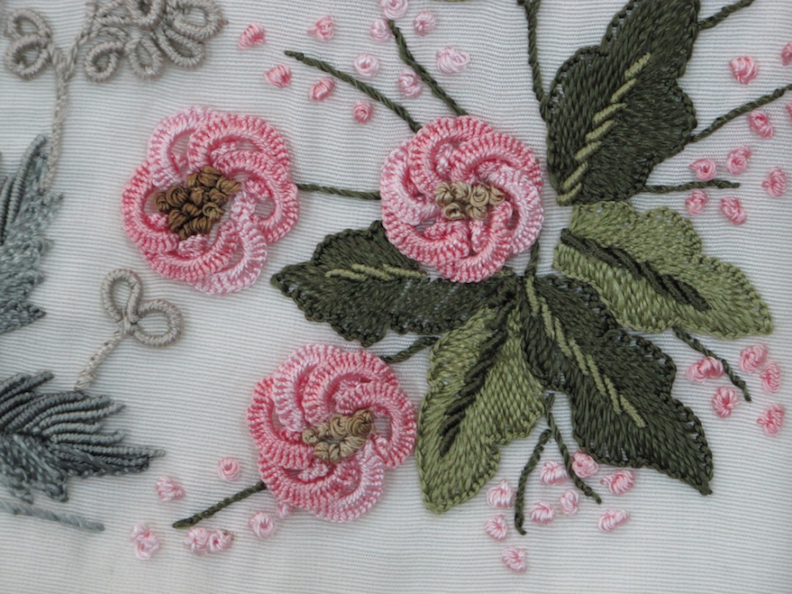
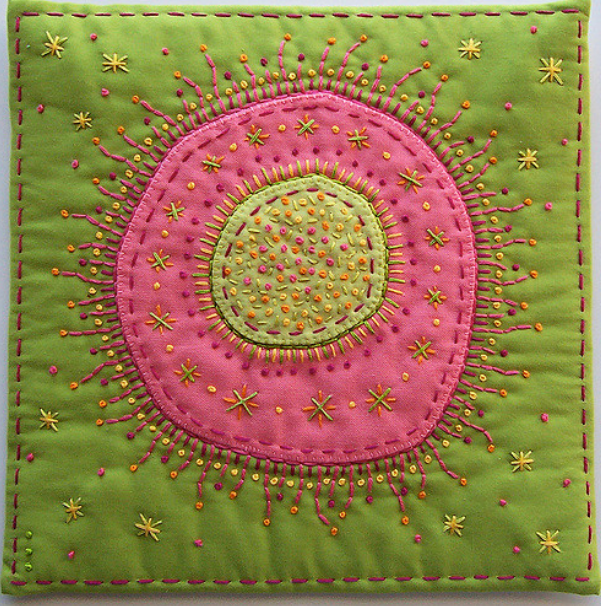
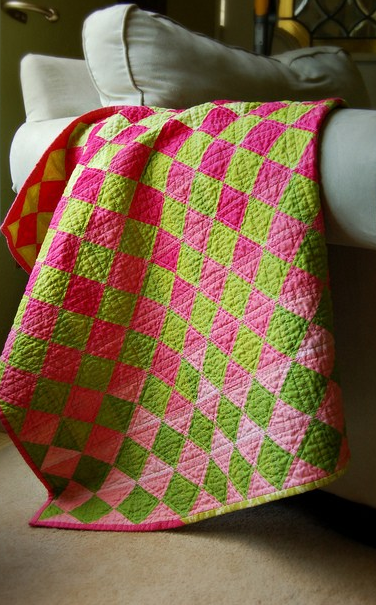
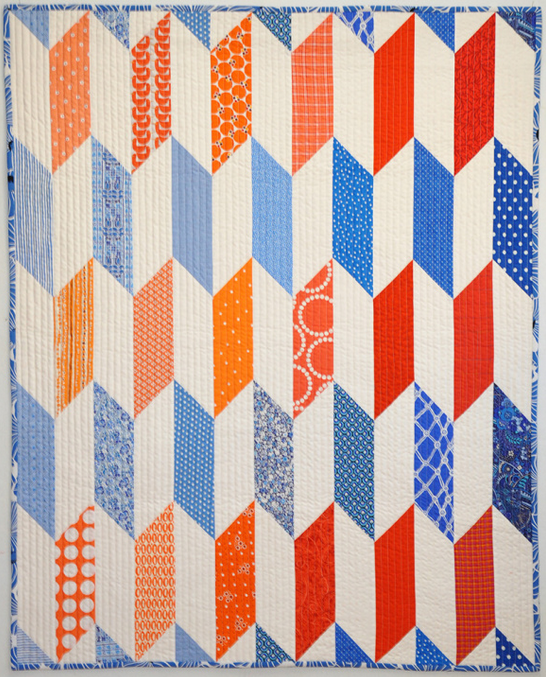
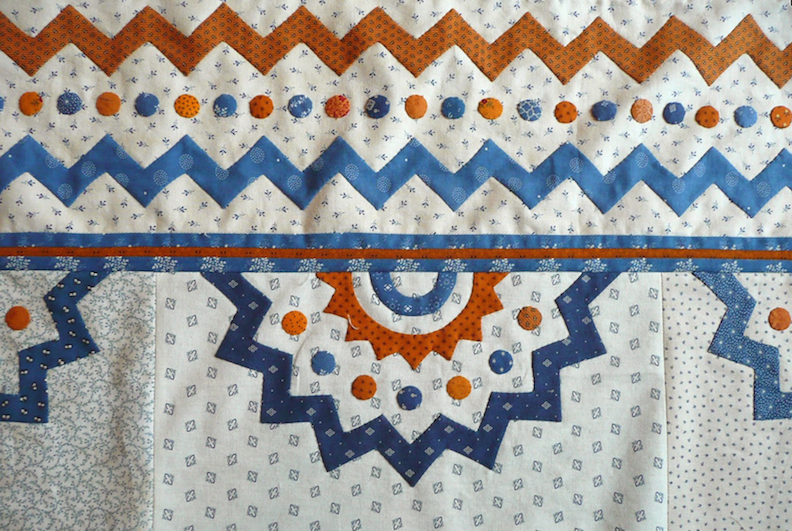
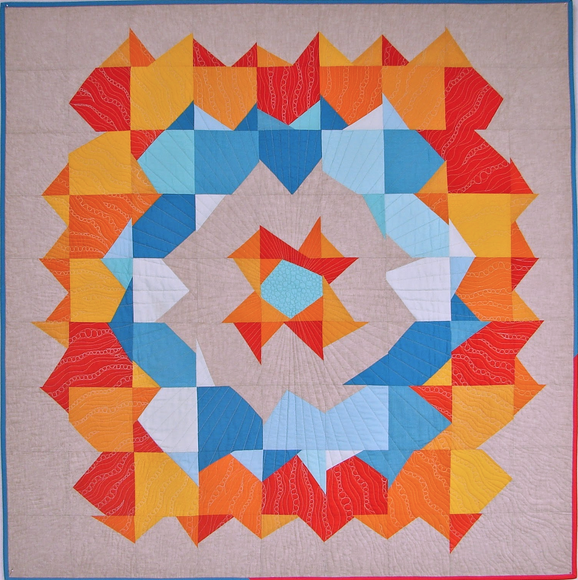
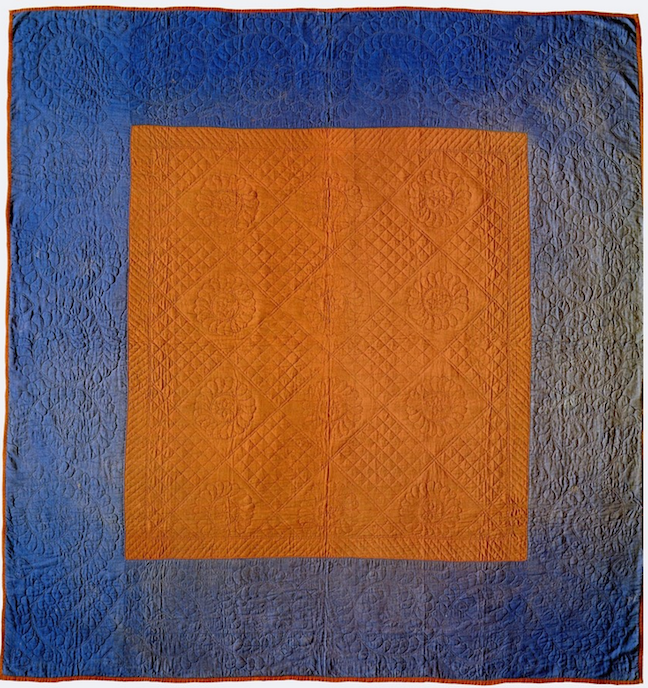
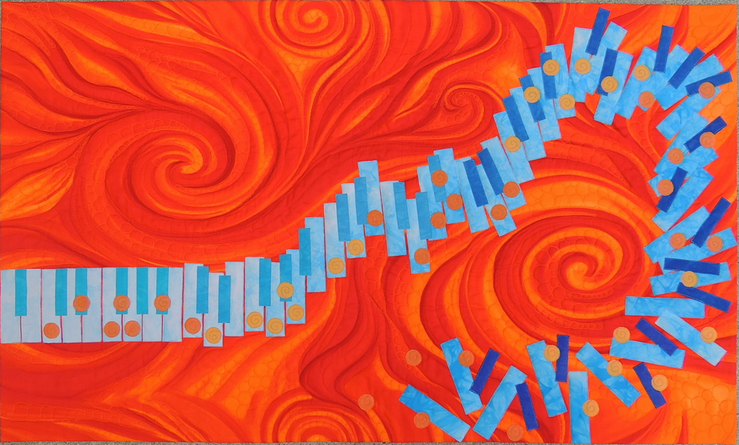
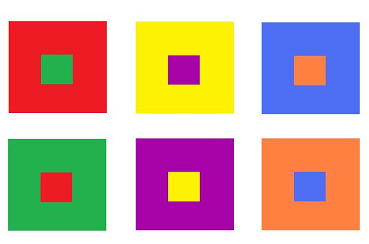
Practice Exercise: Color Perception
Supplies-
1 sheet of construction paper in six different saturated colors (Red, Yellow, Cyan-Turquoise, Blue, Green, Violet, Orange)
Ruler, pencil, scissors
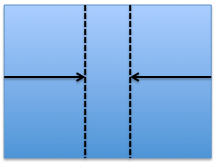
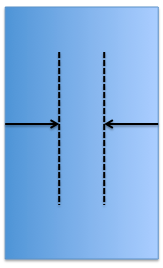
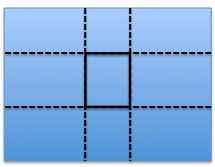
1. Cut 2 (4" x 6") rectangles from each color of construction paper. Divide the rectangles into groups (A & B) of six colors. Set group A aside for later.
2. You will now work with group B. Using one rectangle, measure and draw a line 2 1/2" from either side. Measure and draw a line 1 1/2" from top to bottom. The resulting drawn lines should be a 1" square in the center of your rectangle. Repeat for the remaining 5 colors in group B.
3. Carefully cut center square out from each of the rectangles.
4. Place a color from group A behind a group B as in the image above. Notice how the colors vibrate as well as move forward/recede.



































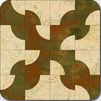
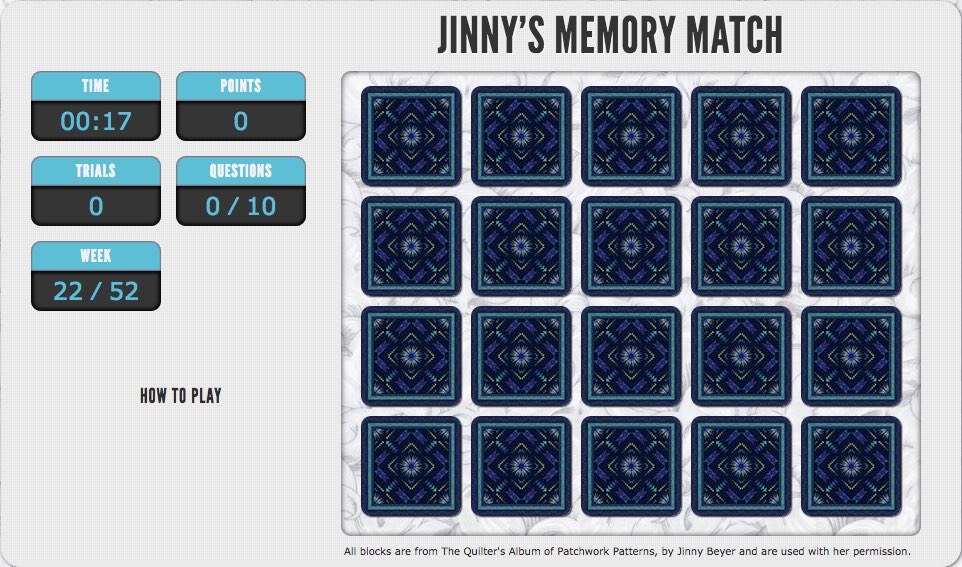
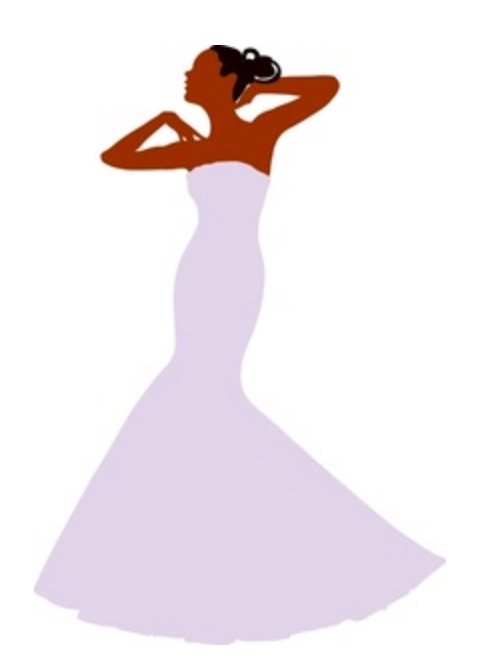
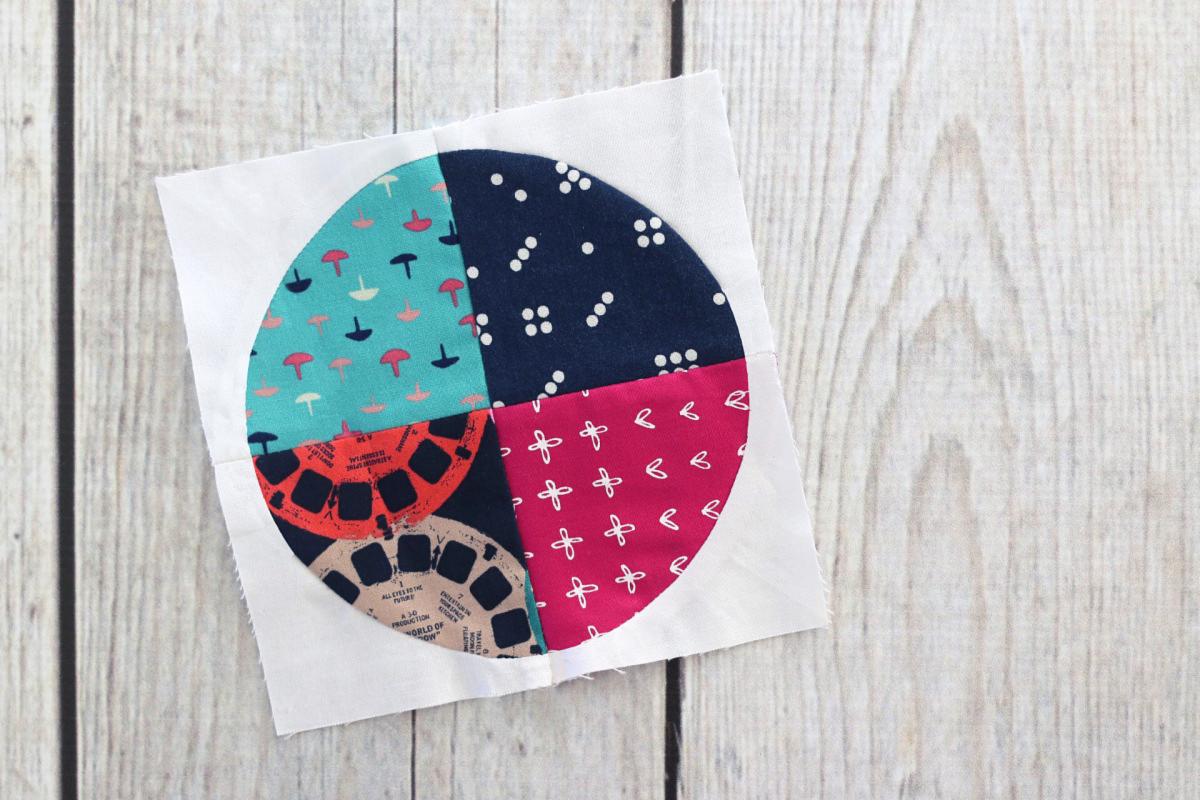

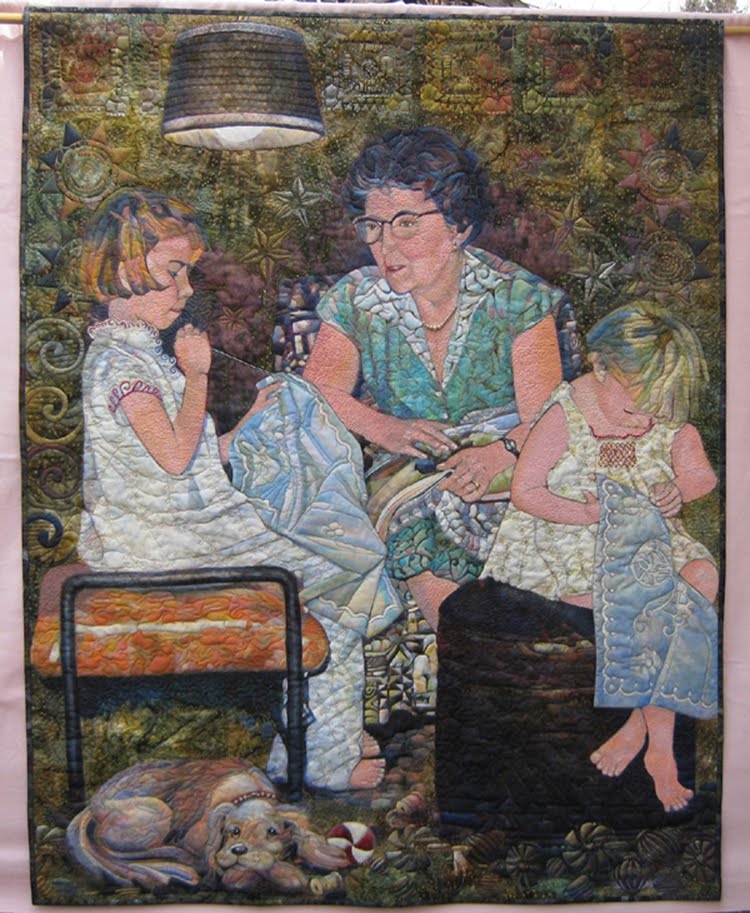
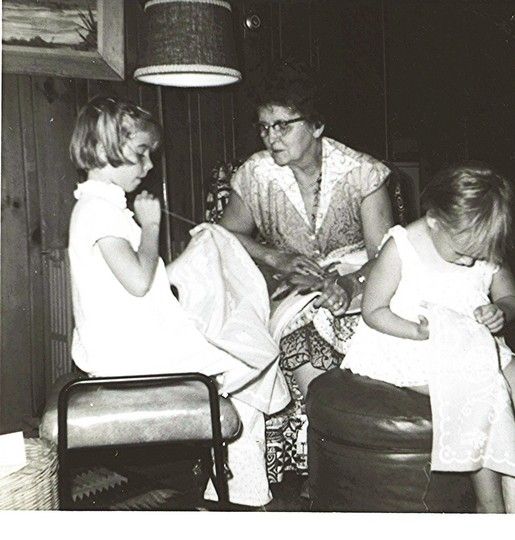

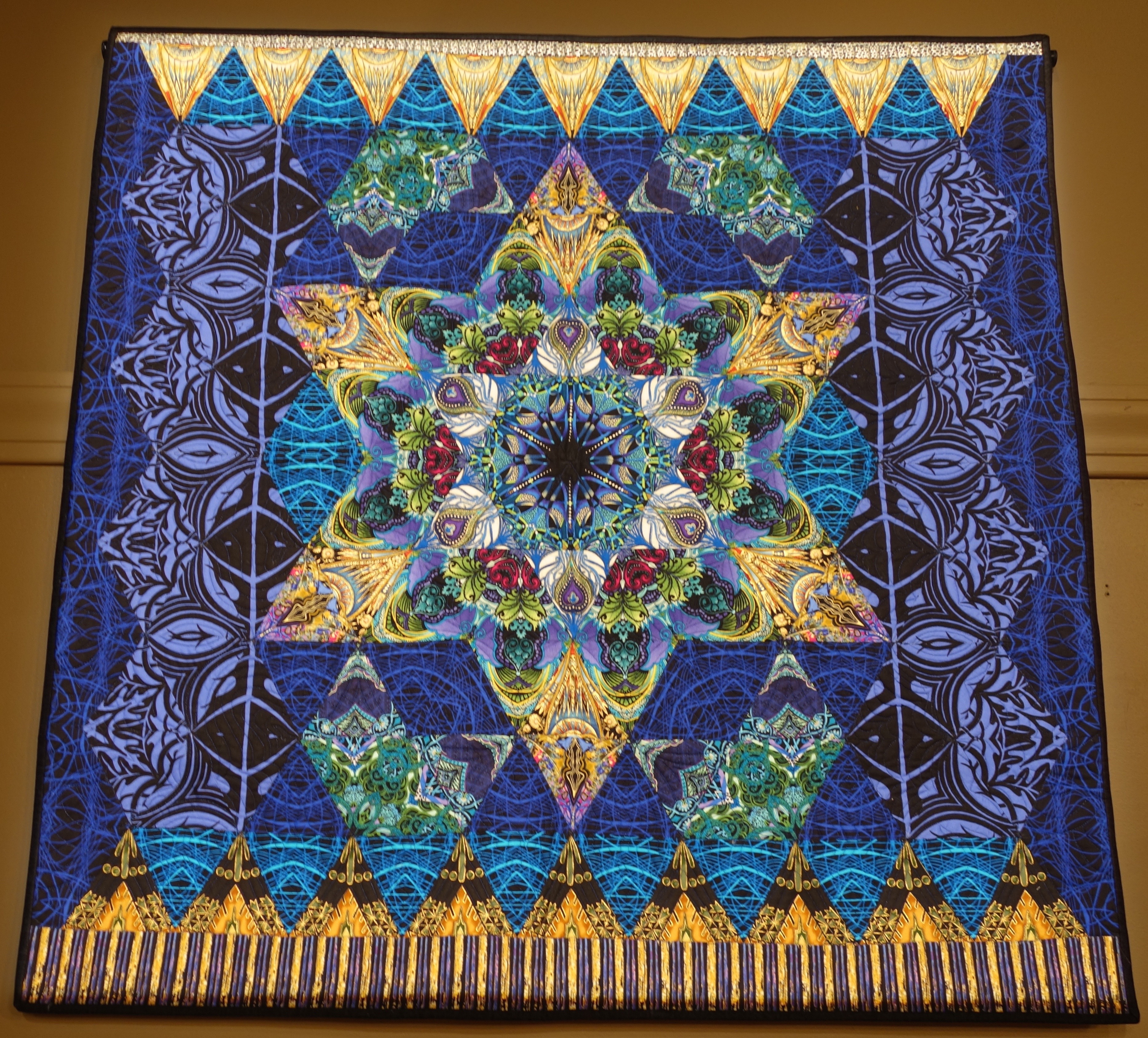


.jpg)


